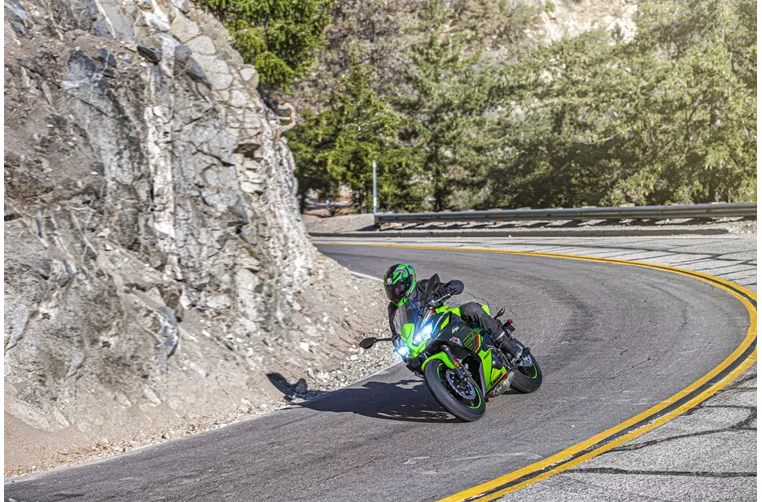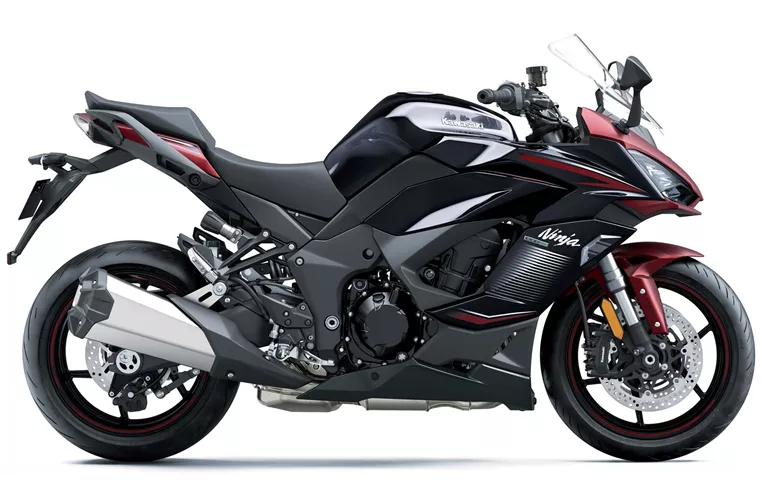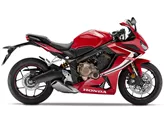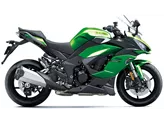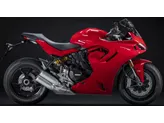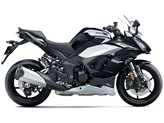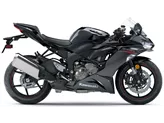Kawasaki Ninja 650 2023 vs. Kawasaki Ninja 1000SX 2023
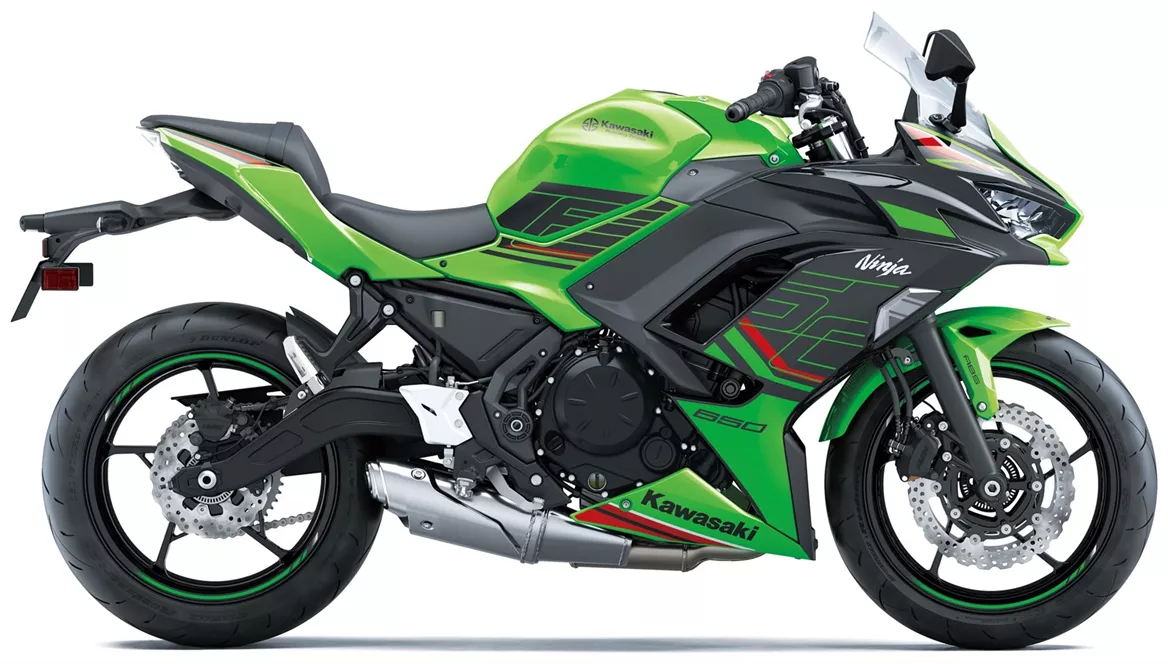
Kawasaki Ninja 650 2023
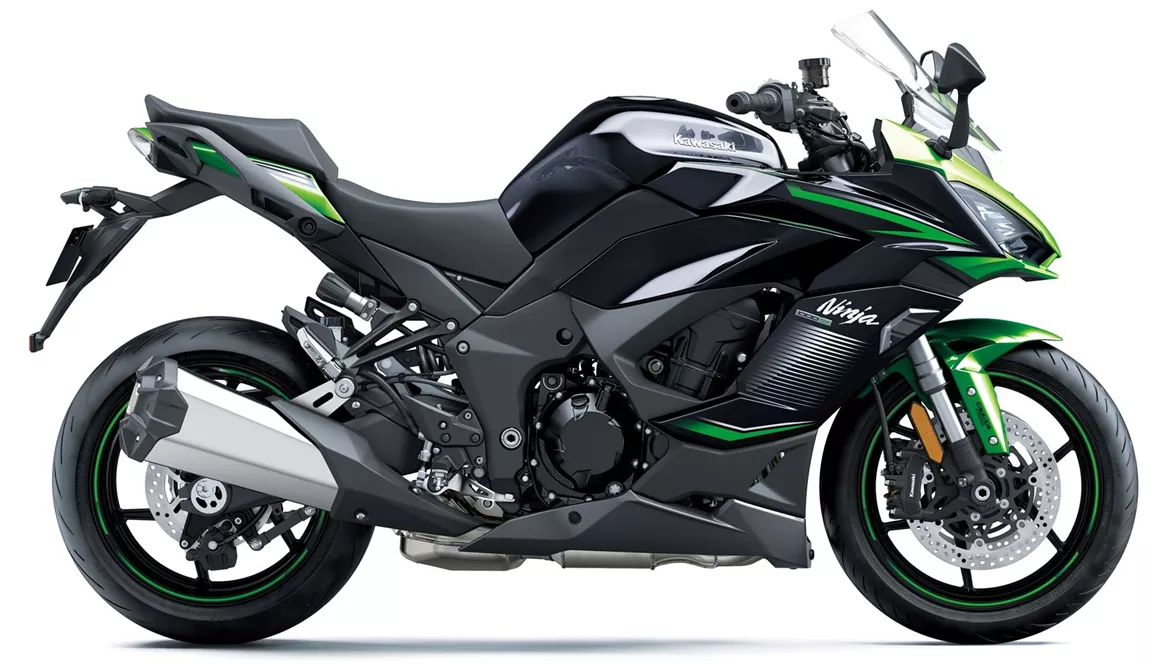
Kawasaki Ninja 1000SX 2023
Overview - Kawasaki Ninja 650 2023 vs Kawasaki Ninja 1000SX 2023
The Kawasaki Ninja 650 model year 2023 is a supersport motorcycle that offers a range of features and capabilities. It is powered by an inline, 4-stroke engine with a displacement of 649cc. The engine produces 68.2 horsepower and 65.7 Nm of torque, providing ample power for both city riding and highway cruising. The engine is equipped with DOHC technology and has a compression ratio of 10.8.
In terms of suspension, the Ninja 650 features a telescopic fork front suspension with a diameter of 41mm and a travel of 125mm. The rear suspension consists of a swing arm with a monoshock absorber and a travel of 130mm. The rear suspension also offers preload adjustment for added customization.
The chassis of the Ninja 650 is made of steel and has a rake of 65.5 degrees and a trail of 100mm. The braking system consists of double disk brakes with a diameter of 300mm and petal technology. The bike is equipped with advanced rider assistance systems such as ABS and traction control, enhancing safety and control.
In terms of dimensions and weights, the front tire has a width of 120mm and a diameter of 17 inches, while the rear tire has a width of 160mm and a diameter of 17 inches. The wheelbase measures 1410mm and the seat height is 790mm. The bike has a kerb weight of 193kg and a fuel tank capacity of 15 liters. The equipment includes LED daytime running lights, LED headlights, and a TFT display.
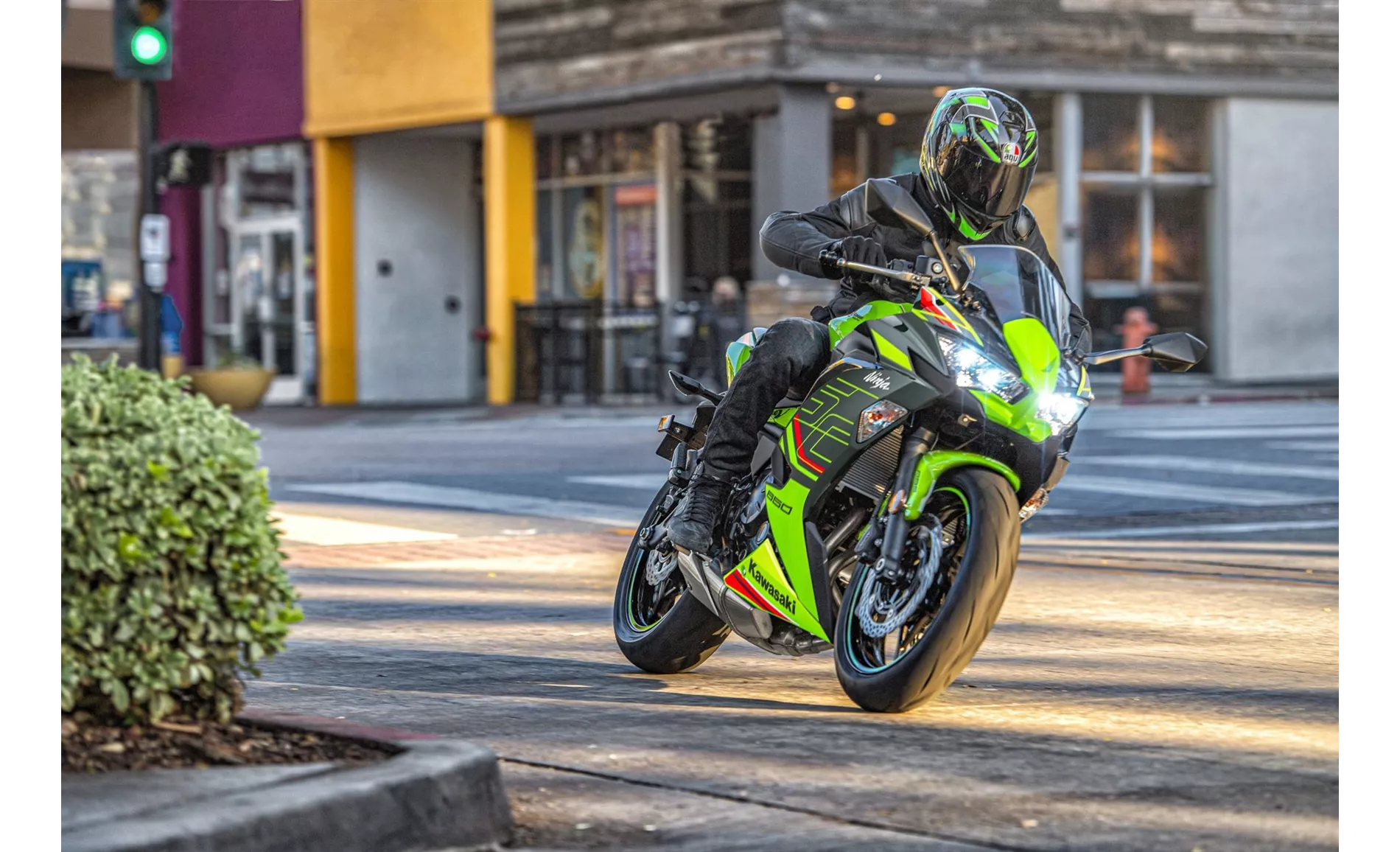
Kawasaki Ninja 650 2023
On the other hand, the Kawasaki Ninja 1000SX model year 2023 is a sport touring motorcycle that offers a range of features and capabilities. It is powered by an inline, 4-stroke engine with a displacement of 1043cc. The engine produces a powerful 142 horsepower and 111 Nm of torque, providing excellent performance for both sporty riding and long-distance touring. The engine is equipped with DOHC technology and has a compression ratio of 11.8.
In terms of suspension, the Ninja 1000SX features an upside-down telescopic fork front suspension with a diameter of 41mm and a travel of 120mm. The rear suspension consists of a swing arm with a monoshock absorber and a travel of 144mm. The rear suspension offers compression, preload, and rebound adjustment for enhanced customization.
The chassis of the Ninja 1000SX is made of aluminum and has a rake of 65.5 degrees and a trail of 102mm. The braking system consists of double disk brakes with a diameter of 300mm and radial, monoblock, petal technology. The bike is equipped with advanced rider assistance systems such as ABS, riding modes, cornering ABS, ride by wire, quickshifter, and traction control, providing enhanced safety and performance.
In terms of dimensions and weights, the front tire has a width of 120mm and a diameter of 17 inches, while the rear tire has a width of 190mm and a diameter of 17 inches. The wheelbase measures 1440mm and the seat height is 834.98mm. The bike has a kerb weight of 235kg and a fuel tank capacity of 19 liters. The equipment includes LED daytime running lights, LED headlights, a TFT display, and an adjustable windscreen.
In terms of strengths, the Ninja 650 2023 is suitable for touring and offers a comfortable riding experience. It also has a safety package with ABS and traction control. The bike is very accessible and has ergonomically versatile features. Additionally, it has the typical Ninja look, which is appealing to many riders.
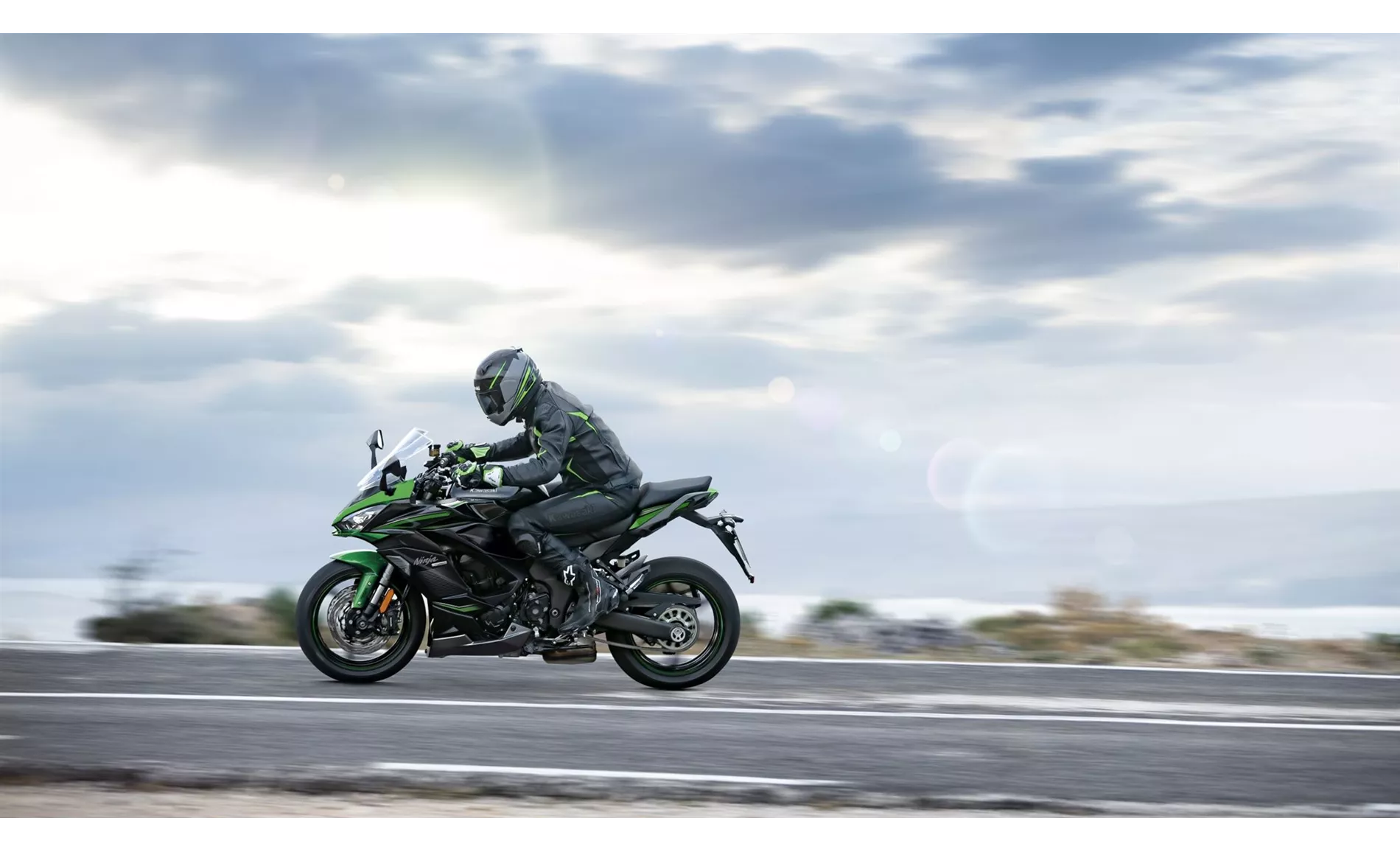
Kawasaki Ninja 1000SX 2023
On the other hand, the Ninja 1000SX 2023 has a silky four-cylinder engine that provides smooth and powerful performance. It offers comfortable yet sporty ergonomics, making it suitable for both long rides and spirited riding. The bike also provides excellent wind protection with its full fairing. It comes with a standard electronics package, including ABS, riding modes, cornering ABS, ride by wire, quickshifter, and traction control. The bike offers lots of stability thanks to its full fairing and is also very accessible to riders.
However, the Ninja 650 2023 has some weaknesses, including average chassis and brakes. Additionally, adjusting the rear shock absorber can be laborious, which may be inconvenient for some riders.
Similarly, the Ninja 1000SX 2023 has a few weaknesses, such as the engine needing revs for optimal performance. The electronics could be more user-friendly, and the windshield can only be adjusted with two hands, which may be cumbersome for some riders.
In conclusion, both the Kawasaki Ninja 650 2023 and the Kawasaki Ninja 1000SX 2023 offer unique features and capabilities. The Ninja 650 is a supersport motorcycle suitable for touring, while the Ninja 1000SX is a sport touring motorcycle with powerful performance and added comfort features. Riders can choose between these two models based on their specific preferences and riding needs.
Technical Specifications Kawasaki Ninja 650 2023 compared to Kawasaki Ninja 1000SX 2023
Pros and Cons in comparison
Pros and Cons in comparison
Kawasaki Ninja 650 2023
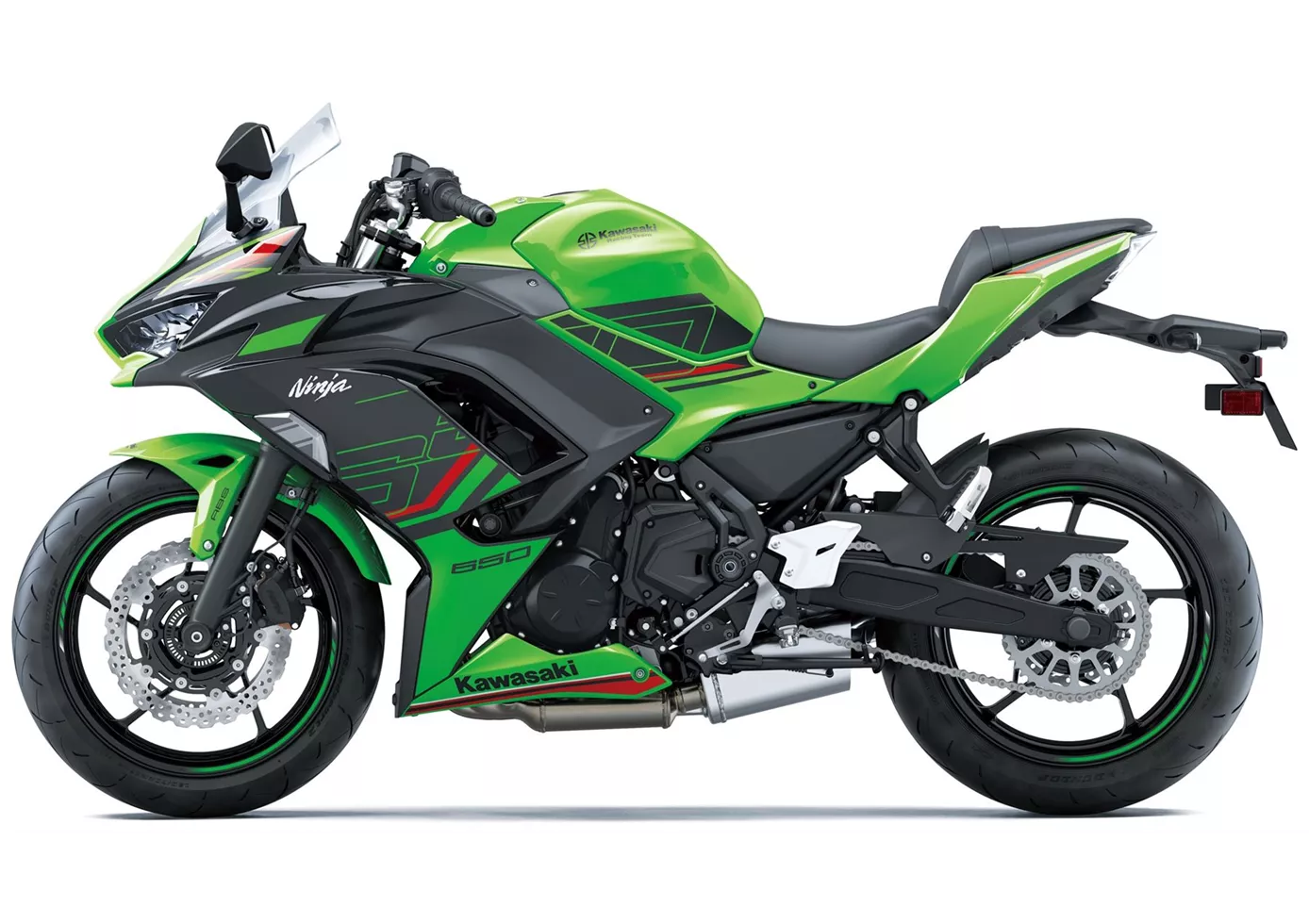
To judge the Kawasaki Ninja 650 purely on its paper form would be a serious mistake. The two-day test showed once again that performance data carries more weight at the pub table than in the wild. Kawa's sports tourer does exactly what it is supposed to and, thanks to the constant revision and the new features added for 2023, is still an enrichment for the class. Only hobby racers should be warned, as the name Ninja still stirs up a certain expectation that the 650 does not fully meet.
Kawasaki Ninja 1000SX 2023

A sports tourer of the old school. The Kawasaki Ninja 1000SX fulfils all the points you would expect from this bike category. Added to this is a comprehensive electronics package that offers everything you could wish for when travelling - and at no extra charge! The fact that the operation is perhaps not quite as intuitive as the competition already manages, is forgiven at the latest when you take a look at the price tag.
Price Comparison Avarage Market Price Kawasaki Ninja 650 vs Kawasaki Ninja 1000SX
There are a few key differences between a Kawasaki Ninja 650 2023 and a Kawasaki Ninja 1000SX 2023. In terms of price, the actual average price of a Kawasaki Ninja 1000SX 2023 is about 81% higher. Compared to Kawasaki Ninja 1000SX 2023 there are more Kawasaki Ninja 650 2023 bikes available on the 1000PS.de Marketplace, specifically 112 compared to 89. It takes less time to sell a Kawasaki Ninja 1000SX with 128 days compared to 137 days for the Kawasaki Ninja 650. Since model year 2017 1000PS.de editors have written 20 reviews for the Kawasaki Ninja 650 and 13 reviews for the Kawasaki Ninja 1000SX since model year 2020. The first review for the Kawasaki Ninja 650 was published on 04/10/2016 and now has more than 79,600 views. This compares to more than 40,500 views for the first review on Kawasaki Ninja 1000SX published on 05/11/2019.
